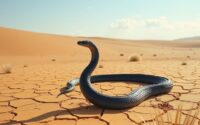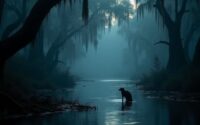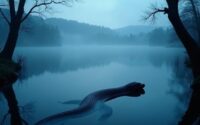Could the Lake Champlain Monster Be Real?
The Lake Champlain Monster, known as Champ, has intrigued many for centuries. First reported in 1609, numerous sightings have sparked both fascination and skepticism. Some attribute these encounters to common wildlife, while others entertain the idea of a prehistoric creature lurking beneath the surface. As locals share stories and enthusiasts conduct investigations, the mystery continues to grow. What might future discoveries reveal about the truth behind this enduring legend?
Introduction

What could be lurking beneath the waters of Lake Champlain? For centuries, whispers of a mysterious creature have captured the imaginations of both locals and visitors alike. This enigmatic being, affectionately dubbed “Champ,” is said to resemble a prehistoric serpent or giant eel. Sightings date back to the 19th century, sparking curiosity and fueling countless tales. People flock to Lake Champlain, hoping to glimpse the elusive monster and explore the waters’ depths. Scientists debate the phenomenon, with some attributing reports to misidentifications of common animals or natural phenomena. Yet, the allure of Champ remains strong, inspiring documentaries, books, and fervent discussion. Lake Champlain’s depths still hold secrets, begging the question: is Champ merely a myth, or is something extraordinary waiting to be discovered?
First Reported in 1609
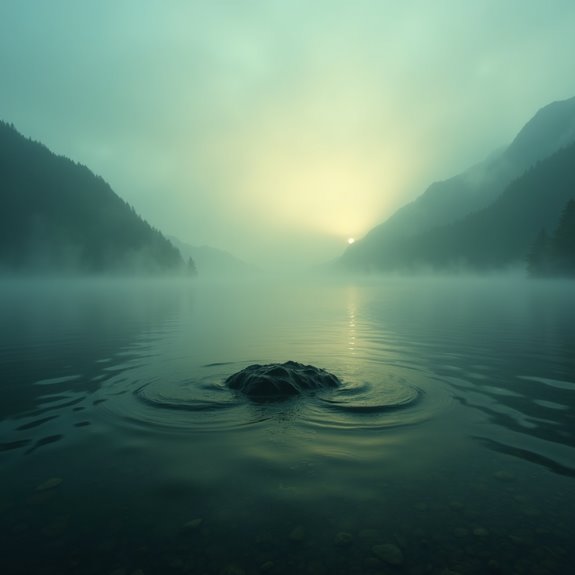
In 1609, a critical moment in the legend of the Lake Champlain Monster began when Samuel de Champlain, the lake’s namesake and a French explorer, recorded the first sighting of a strange creature. Champlain noted an encounter with a large, serpent-like being while traversing the waters of Lake Champlain. He described the creature as having a significant body, resembling a snake, and its presence stirred curiosity among the local Indigenous tribes. They spoke of a similar creature in their folklore, calling it “Tatoskok.” Champlain’s account laid the groundwork for future stories and sightings, cementing the monster’s place in history. This early report sparked imaginations and raised questions, establishing a connection between the lake and its enigmatic inhabitant that remains significant today.
Notable Cases or Sightings
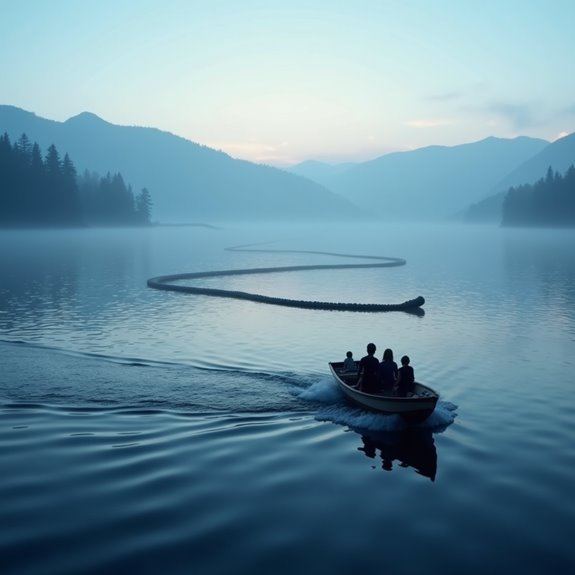
How have the stories of the Lake Champlain Monster evolved over the years? Sightings have been reported for centuries, fueling intrigue and curiosity. In 1977, a scuba diver named Sandra Mansi captured what some believe to be definitive proof — a photograph of a large, unidentified creature swimming in the lake. The image sparked widespread debate. In 1983, an influential sighting occurred when a couple reported seeing a massive black shape gliding through the water, creating a wake. More recently, in 2018, a viral social media post featured a blurry video that claimed to show the creature, reigniting public interest. These notable incidents illustrate the persistent allure of the Lake Champlain Monster, as stories continue to capture imaginations and inspire exploration.
Common Theories or Explanations
Although many sightings of the Lake Champlain Monster have captured the public’s imagination, several theories attempt to explain the phenomenon. One prevalent theory suggests that the creature might be a large fish, like a sturgeon, which can create ripples and unusual shapes in the water. Others propose that the sightings stem from misidentifications of common animals, such as otters or elk. Some enthusiasts argue that the monster represents a surviving prehistoric creature, while skeptics often highlight the possibility of hoaxes or optical illusions. Regardless of the theory, the intrigue surrounding the Lake Champlain Monster endures, as stories continue to arise. This combination of speculation and folklore fosters ongoing interest in what lies beneath the lake’s surface.
Frequently Asked Questions
What Evidence Supports the Existence of the Lake Champlain Monster?
Various eyewitness accounts, unclear photographs, and sonar readings hint at an unidentified creature in Lake Champlain. Some locals firmly believe in its existence, while skeptics argue the evidence’s lack of scientific validity undermines these claims.
How Has Public Perception of the Monster Changed Over Time?
Public perception of the creature has evolved dramatically; initially embraced as a myth, it’s now seen with skepticism, though some still cherish the legend. Interest in its mystery sparks curiosity and tourism, blending local lore with folklore.
Are There Any Scientific Investigations Into Lake Champlain’s Ecosystem?
Researchers have conducted various scientific investigations into Lake Champlain’s ecosystem. They’ve examined water quality, biodiversity, and species interactions, seeking to understand the lake’s health and its role in the region’s environmental dynamics.
What Role Do Local Businesses Play in Monster Tourism?
Local businesses thrive on monster tourism, attracting visitors with themed merchandise, boat tours, and dining experiences. They create unique marketing strategies, fostering community engagement while enhancing the region’s economy through increased foot traffic and tourism-related activities.
Are There Any Cultural or Historical Connections to the Lake Champlain Monster?
Local folklore emphasizes the lake’s importance in regional identity, with stories of the creature weaving into community narratives. This blend of history and mythology fosters a sense of belonging and attracts curious tourists to the area.
